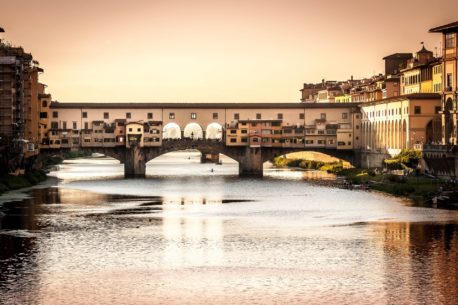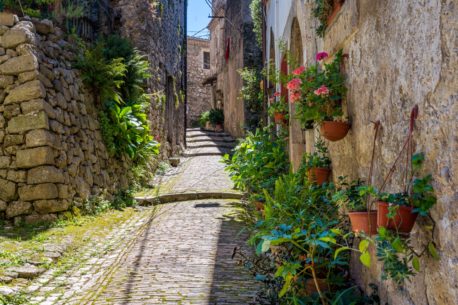
The small hamlet of Pitigliano is also known as “the small Jerusalem”, a clear indication of the fact that for many centuries the Jewish population was an integrated and welcomed part of the village and welcomed by the local population.
The walls surrounding Pitigliano are of Etruscan origin and have been expanded and strengthened in the XIII century. We will access the village through a gate built in the XV century, to proceed alongside the Medicean aqueduct to then arrive to the village’s picturesque main square worth admiring and walking around. Palazzo Orsini, embedded in the homonymous fortress, will be our next destination. Here we will be visiting the courtyard, the first two halls, and its Museum where many artifacts and objects are on display, both of artistic value as well as showing the daily life throughout the centuries in the Palace and the village. We will then pass by the Duomo before accessing the area of the charming old ghetto, completely carved in tuff rock. Here we will be seeing the old mikve, slaughterhouse, and oven where the Pesach matzos for the whole community were baked.
From this area we will move on to visit the Synagogue built in 1598. Originally it was extremely rich in its decor and embellishments. However, due to its position on the cliff, it has always been subjected to earth slips with the consequent need of constant repairs. At the end, when the local Jewish population left all its decor was lost with the only exception of its XVII century Ahron Hakodesh which was donated to the Synagogue of Carmiel in Israel.
The last part of the visit will take us to the Jewish cemetery, located outside the town’s walls at the feet of the Orsini fortress along a terraced cliff in a quite spectacular position. This plot of land to be destined to become the cemetery was given in 1556 to the Jewish doctor David De Pomis by the Count Nicolò IV Orsini as a burial place for his young wife. Since then, it has become the burial place for almost 300 Jews from Pitigliano whose different graves’ styles are a testimony of the different time periods during which the local Jewish population lived here.

Florence, the world capital of the Renaissance, has its first record of Jews living within its boundaries dating back to the XII century. The peak of the Jewish presence was obviously reached in the XIV and XV centuries, centuries that saw the blossoming and the height of the Renaissance period, even though the ruling family […]

Alatri is a small town, but with a very rich and long history. It has megalithic walls whose origins are lost in time, an incredible Etruscan necropoli and throughout its existence it has known the Roman domination, the barbaric invasions and, at the time of the Church temporal power, the strugles between the Papacy and […]